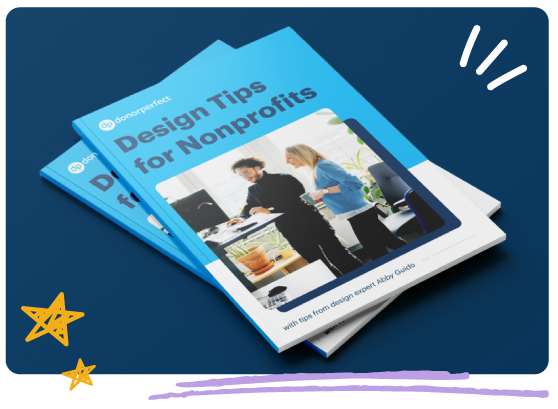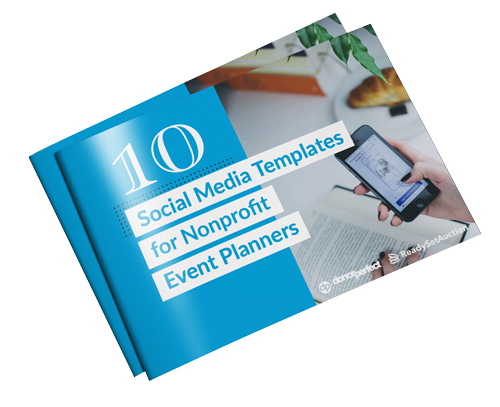Nonprofit Technology & Fundraising Blog
Subscribe to our mailing list

April 11, 2023 | Fundraising Events, Online Fundraising
Hosting an incredible fundraising event doesn’t have to cost a lot of money. Often the more creative you are, the more money you can save and the more memorable the experience will be for your guests. Whether you are hosting an elegant gala, a fast-paced marathon, or a casual networking event, here are five steps for saving money along the way.
When budgeting, there are two primary figures you want to determine that will help you calculate the rest of your expenses: the amount you can spend, and the amount of revenue you’re hoping to raise. After you know your budget, you can start listing your potential expenses and the percentage of the budget that you will allocate to each. Resources like Google Sheets and Spreadsheets.com have publicly available templates that can help.
Once you have your expenses in order, review your annual goals to determine how much you’re hoping to raise from your event. This will help you to price out the costs of your event tickets, sponsorship packages, and other sources of revenue.
Pro tip: Don’t forget to create a contingency fund! There are a lot of moving pieces when it comes to events, and having some extra money set aside for just-in-case situations can help ease your anxiety if things don’t go exactly as planned.
There are a lot of free resources out there to help with your event needs. And what better way to save on costs than getting something for free?
Givecloud offers a robust fundraising event platform with a free package level that includes ticketing, event registration and check-in, sponsorship packaging, and even post-event reporting.
Canva is an excellent resource for creating marketing material for your event. You can use it to create emails, posters, tickets, event booklets, and any other printed or online content you may need. With thousands of free templates to choose from, you can create any professional, branded, and on-theme material you need.

There’s no need to hire an agency to make your nonprofit branding stand out. We called on design expert Abby Guido to help us create a free guide full of practical, DIY design tips specifically for nonprofits. Get your copy of Design Tips for Nonprofits >>
Social media platforms like Facebook, Instagram, and Twitter provide an opportunity for free advertising. Think about the Facebook groups you could join, post in, or create. Likewise, think about the Twitter or Instagram hashtags you could start a conversation about.
Visuals like photos and videos help build excitement leading up to the event. Consider sharing set-up pictures, auction items, photos from previous events, or a goal meter to build anticipation.
Pro tip: Google offers ad grants to nonprofits for free so you can get the word out to an even wider audience. If your local area has a township website, you could also see about getting your event added to the community calendar.
Of course, not all of the resources you need can be found in a free app or software. That’s when you can turn to your volunteer recruits for help. Start thinking early about what your needs may be and how many volunteers you may need for each task (data entry, event set-up and clean-up, sponsorship outreach, advertising, registration check-in, etc.).
After you have your list made, start reaching out via email, your website, social media, and anywhere else you can think of to get all the free help you need. You can also ask them to put the word out within their networks.
Include multiple event sponsorship packages at different giving levels to make sure small local businesses can support you as readily as larger companies. When creating your packages, include appropriate incentives such as event tickets and advertising in event booklets, radio ads, and other printed materials. Don’t forget to mention the success of past events including money raised, number in attendance, etc.
Pro tip: Don’t let this task eat up all of your focus time. Call on your team for help with creating sponsorship appeal letters or scripts and ask your board members to help solicit these businesses.
When it comes to your biggest expenses, like the venue and catering, make sure you do your research, and remember that negotiating is part of the process.
When it comes to venue costs, here are six easy ways to save:
Pro tip: If you’re considering a location often used for weddings, check out Wedding Spot to get a better idea of the prices the venue offers. EventUp can also help you search for the perfect spot to host your event and provides details like price ranges and seating capacity.
Catering is also one of the biggest expenses, so it helps to get creative here as well to keep your costs low. Oftentimes, people aren’t looking for a sit-down dinner so consider keeping it simple by offering hors d’oeuvres instead of a full-course menu. Having an afternoon event can eliminate the cost of alcoholic beverages, too – and make your event more family-friendly!
A great event can be ruined by poor planning, and working out every last detail will help ensure your fundraising efforts are rewarded with a high return on investment. After you’ve arranged the specifics of your event, make sure you prep your volunteers and staff, test your technology, and have backup plans in place.
If you know you’re going to need a certain number of emails, postcards, or social media posts to promote your event, you can save your team hours of time that would normally be spent coming up with copy or handwriting notes and envelopes. Lean on free templates that already include the information you need, and let your CRM automatically populate names and addresses.
The further in advance you can plan your event communications, the better – including your registration form, donation form, event invites, and reminders. All of your promotional avenues should lead back to the same digital home base – consider adding a QR code to your physical mailings and fliers so the event information can be maintained online. This ensures that if you need to quickly announce any change in plans, the transition will be seamless. You’ll want to give attendees enough information and notice to plan their ride, hire a babysitter, bid on auction items, choose their dinner entree, etc.
Generate your event QR code for free with DonorPerfect:
Pro tip: If your event involves collecting money on the night of, make sure you thoroughly test your online portal for processing donations. Remember, outside venues in remote locations may not have a great internet connection, so test your technology where you are holding your event. Visit the Online Forms Success Hub for more best practices >>
For more help spreading the word about your upcoming events, check out DonorPerfect’s free social media templates for event planners.

Follow us on social!